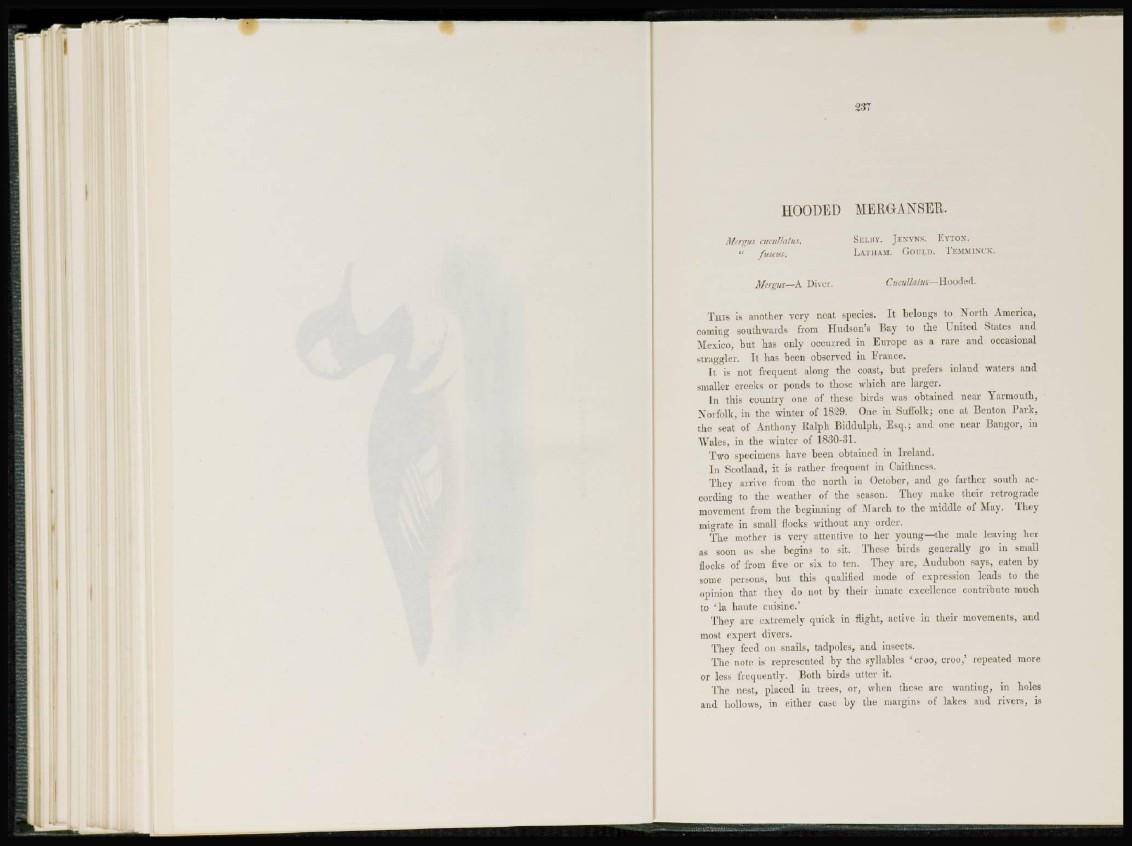
HOODED MERGANSER.
Atergut cucvllaJus, SELHY. JENYNS. KYTON.
" fuscus, LATHAM. GOULD. TRMMINCK.
Mergut—A Diver. Cucullatut—Hooded.
THIS is another very neat species. It belongs to North America,
coining southwards from Hudson's Bay to the United States and
Mexico, but has only occurred in Europe as a rare and occasional
straggler. It has been observed in France.
It is not frequent along the coast, but prefers inland waters and
smaller creeks or ponds to those which arc larger.
In this country one of these birds was obtained near Yarmouth,
Norfolk, in the winter of 1829. One in Suffolk; one at Benton Park,
the seat of Anthony l'nlph Biddulph, Esq.; and one near Bangor, in
Wales, in the winter of 1830-31.
Two specimens have been obtained in Ireland.
I n Scotland, it is rather frequent in Caithness.
They arrive from the north in October, and go farther south according
to the weather of the season. They make their retrograde
movement from the beginning of March to the middle of May. They
migrate iu small flocks without any order.
The mother is very attentive to her young—the male leaving her
as soon as she begins to sit. These birds generally go in small
flocks of from five or six to ten. They arc, Audubon says, eaten by
some persona, but this qualified mode of expression leads to the
opinion that they do not by their innate excellence contribute much
to ' l a haute cuisine.1
They are extremely quick in flight, active in their movements, and
most expert divers.
They feed on snails, tadpoles, and insects.
The note is represented by the syllables ccroo, croo,' repeated more
or less frequently. Both birds utter it.
The nest, placed in trees, or, when these are wanting, in holes
and hollows, in either case by the margins of lakes and rivers, is